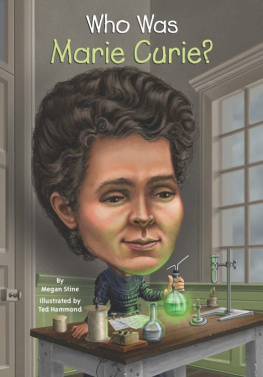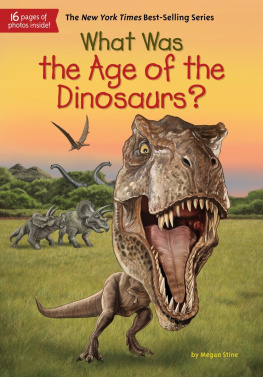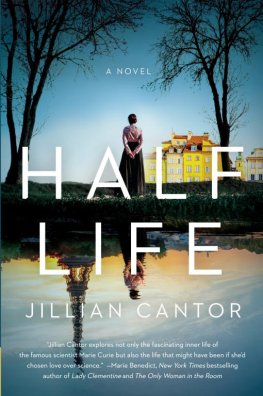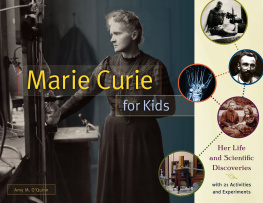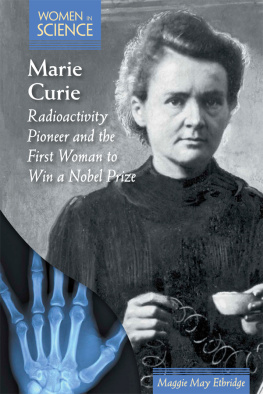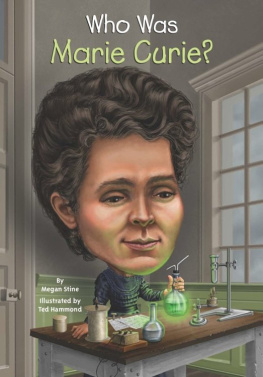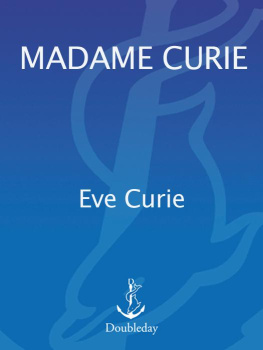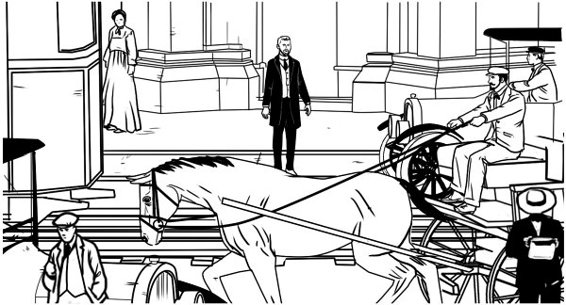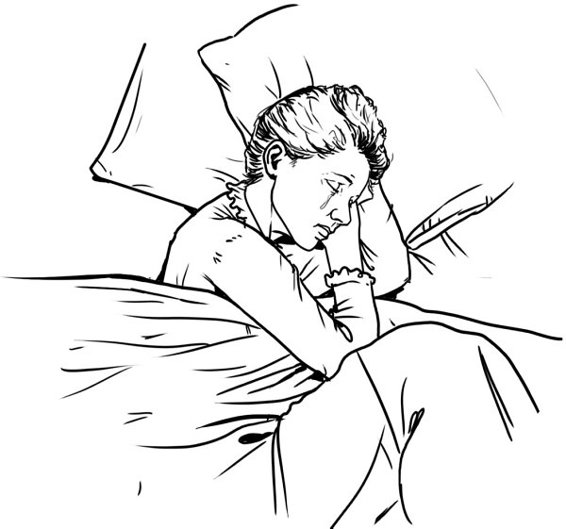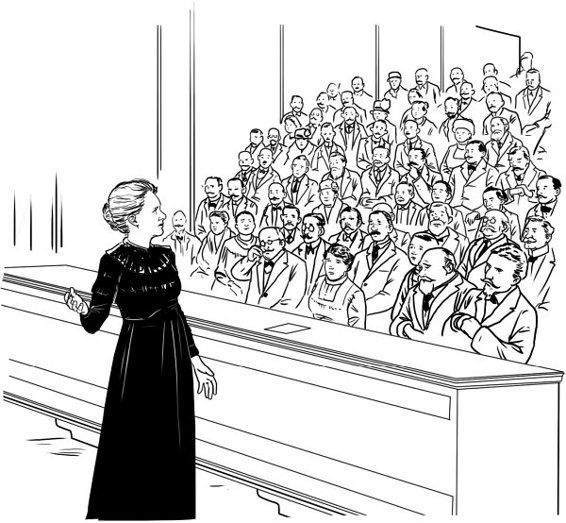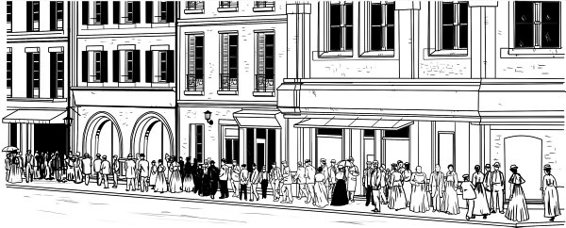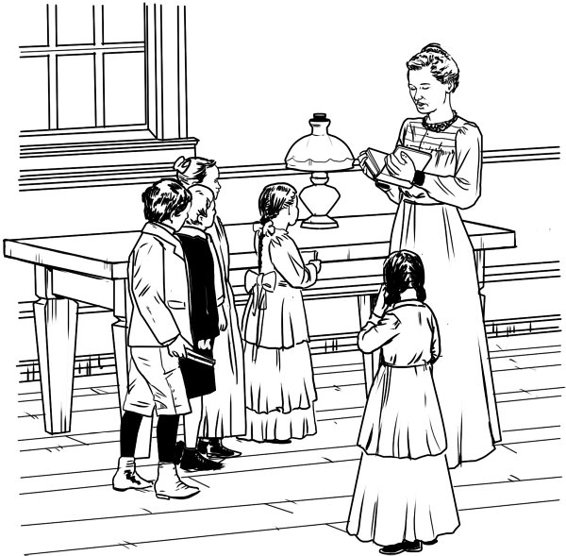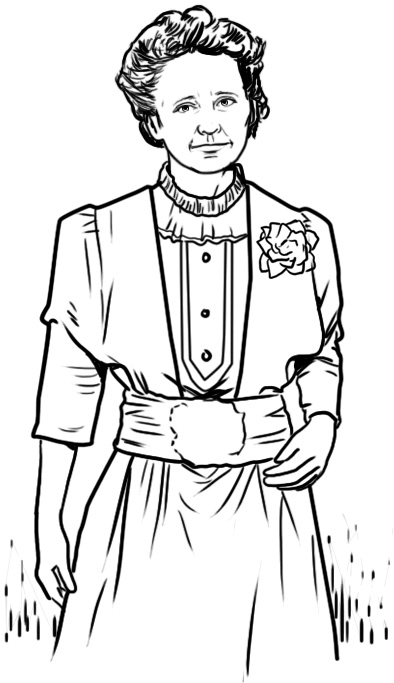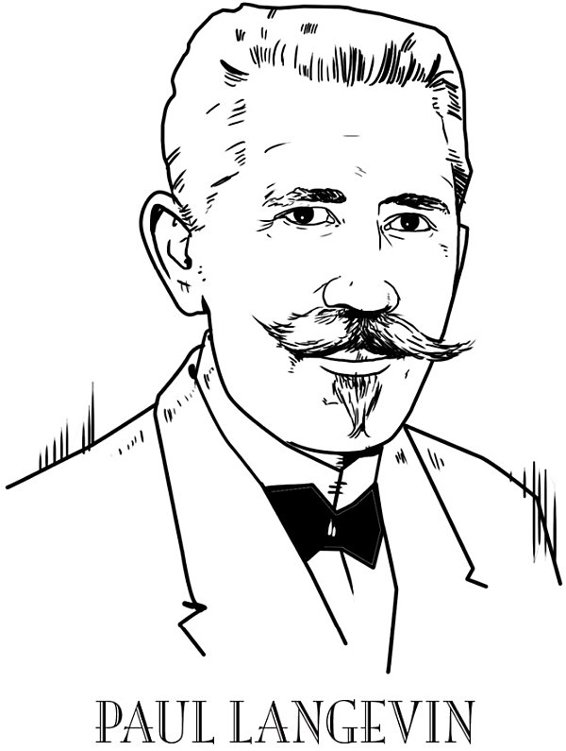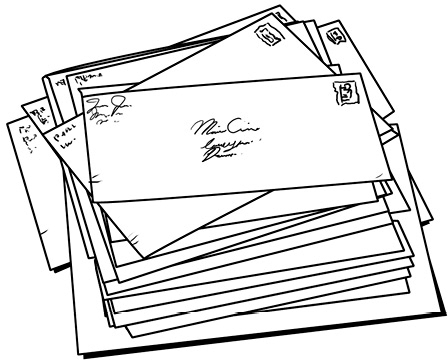Who Was
Marie Curie?
By Megan Stine
Illustrated by Ted Hammond
Grosset & Dunlap
An Imprint of Penguin Group (USA) LLC
For my motherMS
GROSSET & DUNLAP
Published by the Penguin Group
Penguin Group (USA) LLC, 375 Hudson Street, New York, New York 10014, USA

USA | Canada | UK | Ireland | Australia | New Zealand | India | South Africa | China
penguin.com
A Penguin Random House Company
Penguin supports copyright. Copyright fuels creativity, encourages diverse voices, promotes free speech, and creates a vibrant culture. Thank you for buying an authorized edition of this book and for complying with copyright laws by not reproducing, scanning, or distributing any part of it in any form without permission. You are supporting writers and allowing Penguin to continue to publish books for every reader.
Text copyright 2014 by Megan Stine. Illustrations copyright 2014 by Ted Hammond. Cover illustration copyright 2014 by Nancy Harrison. All rights reserved. Published by Grosset & Dunlap, a division of Penguin Young Readers Group, 345 Hudson Street, New York, New York 10014. GROSSET & DUNLAP is a trademark of Penguin Group (USA) LLC.
Library of Congress Cataloging-in-Publication Data is available.
ISBN 978-0-698-17184-8
Version_1
Chapter 8
Misery
It was rainy, gray, and damp all over Paris on April 19, 1906. Pierre had gone out to a science meeting that morning. He was in a wonderful mood. His friends said he was happier and talked more than ever before.
After the meeting, Pierre went back out into the rain. There were horses, carriages, cars, people, and trams everywhere. As Pierre began to cross a big, busy street, a huge horse-drawn wagon hit him. Pierre tried to grab on to the horse, to steady himself, but he was weak. He fell. The wagon driver couldnt stop the heavy cart. The wheel ran over Pierre and crushed his skull.
A few hours later, Marie heard the terrible news that her husband was dead. It struck her as hard as the wagon that killed Pierre. Marie felt as if there was no reason to be happy ever again. She became silent. She wouldnt eat and barely got out of bed. It seemed to her as if her life was over.
For many months, Marie was miserable and alone. She later wrote that her children, Irene and Eve, were her only reasons to go on living.
After a while, the Sorbonne invited Marie to take over Pierres teaching job. Marie agreed, but it was a bittersweet triumph. While Pierre was alive, they would not let her be a professor! No woman had ever taught at the Sorbonne. Now that Pierre was dead, she was welcome to take his place.
On the November day in 1906 when Marie arrived to teach her first class, hundreds of people lined the streets. Reporters and photographers came. The crowds waited to hear what the famous Madame Curie would say. Would she mention Pierre? Would she talk about how much he meant to the world of science? No. Marie simply began the science lesson where Pierre had left off. Even so, people in the audience cried. They all sensed how Marie felt, and how hard it was for her to go on without him.
For the next few years, Marie was sad. Still, she continued her work and moved her children to a house in the country, not far from Paris. Marie wanted Irene and Eve to be able to swim and play outside. She also wanted them to learn. Irene was especially smart and, like Marie, loved math and science. Eve was good at music.
Marie arranged with her friends to teach a small group of their children at home. It was something like the Flying University! All the adults took turns teaching classes in one anothers houses.
Maries friends were all scientists. They all spent time together, having dinner and teaching the children. They went on vacation to the beach together. They were very close.
One day, her friends noticed a change in Marie. Suddenly, she seemed happier! She was wearing a pretty dress with a flower, instead of the black dresses she had been wearing to mourn Pierre.
Pretty soon, her friends figured out why Marie was happy. She had fallen in love! The only problem was that the man she lovedPaul Langevinwas already married.
Paul was part of Marie and Pierres circle of friends. He had been Pierres student. He was a brilliant scientist and a good friend. Paul was unhappily married. Sometimes his wife was violent. Paul wished he hadnt married her.
Marie probably never wanted to fall in love with a married man. But she followed her heart and spent time with him anyway. It was the first happiness she had felt in years.
Paul wrote love letters to Marie, and she wrote back to him. One day, Pauls wife, Jeanne, found the letters. She was furious. She threatened to kill Marie! She even followed Marie in the street!
Marie tried to convince Paul to leave his wife and get a divorce. Paul had four children with Jeanne. He didnt want to break up his family. Finally, he promised his wife that he wouldnt see Marie againexcept as a friend.
That year, Marie was on the verge of making historyagain. She was nominated to become the first woman member of the French Academy of Sciences. Was France ready to treat women equally? There were strong feelings on both sides. Many newspapers wrote angry articles about it. They thought women should not be allowed into this private group of male scientists. Even though Marie was already one of the most famous scientists in the world, they thought she should be kept out.
When it came time to vote, Marie was not even allowed inside the Academys building to see what happened!
The vote was held at exactly four oclock on January 24, 1911. Marie was not elected. Her friends were angry about it, but Marie acted like she didnt care. She was not the kind of person to make a fuss about anything.
Besides, Marie still had her work, and she was still in love with Paul.
In November 1911, Marie went to a very important science meeting in Brussels, Belgium. All the most famous scientists from Europe were there, including Albert Einstein. Paul Langevin went, too.

